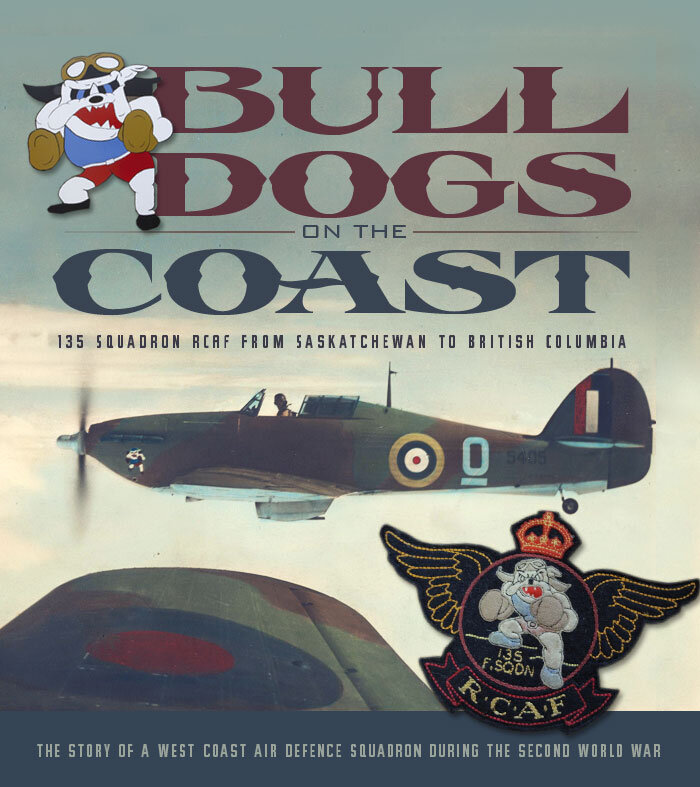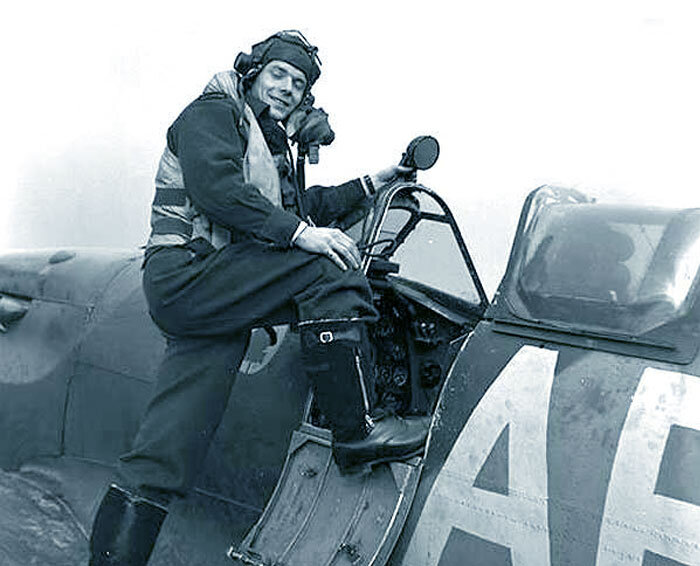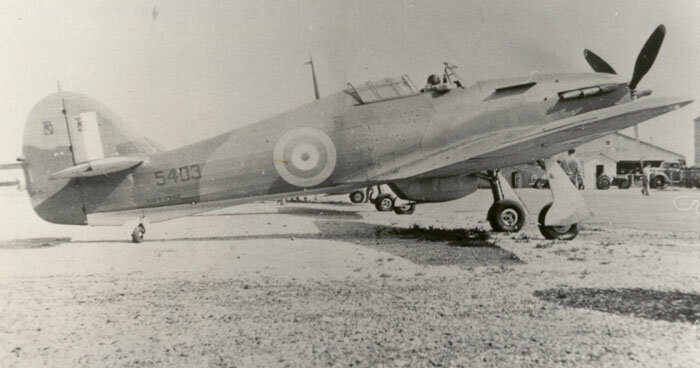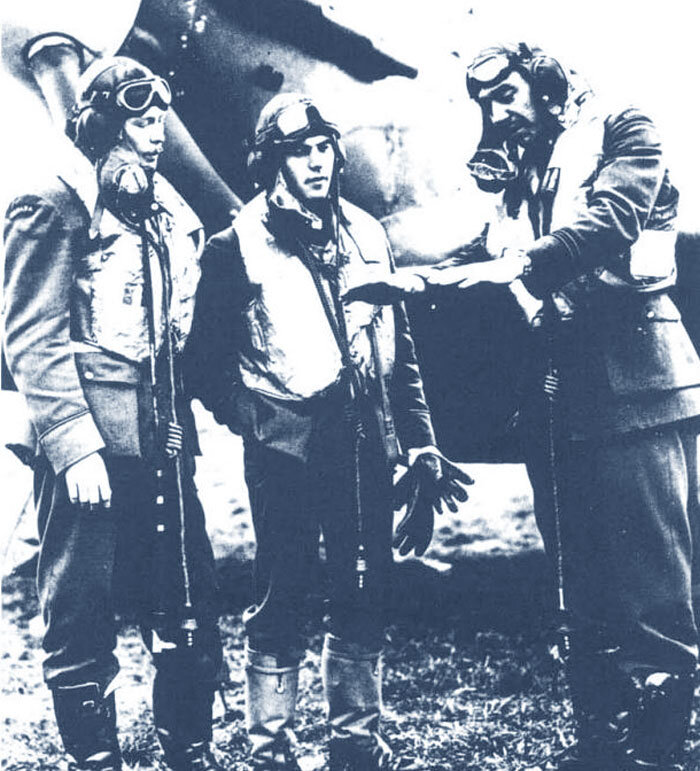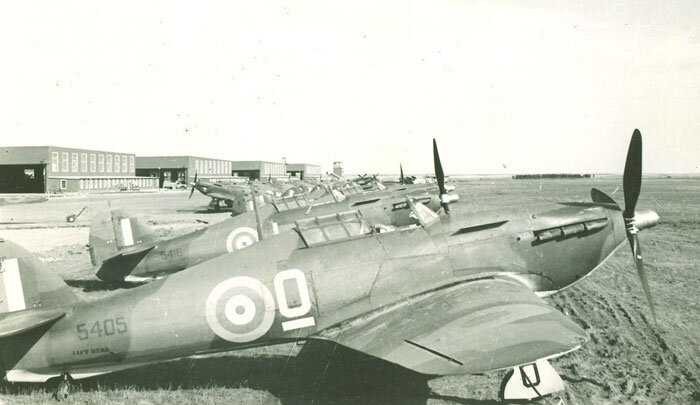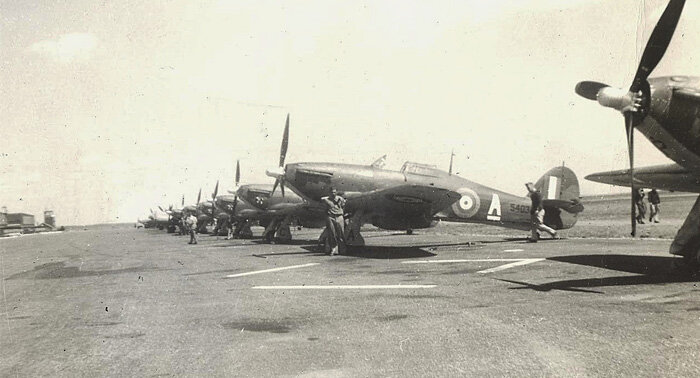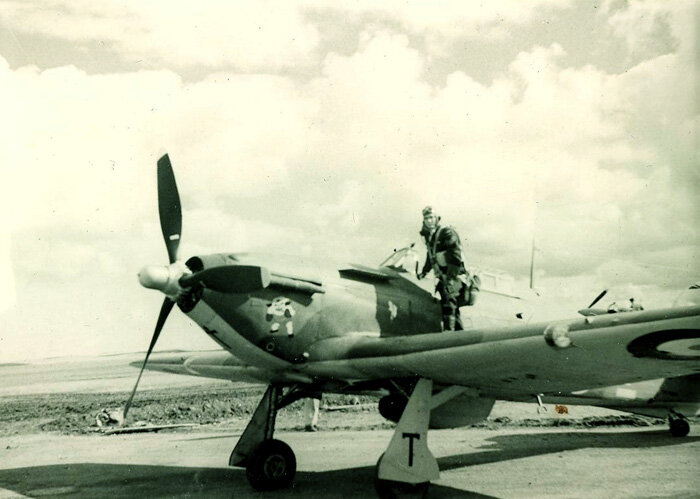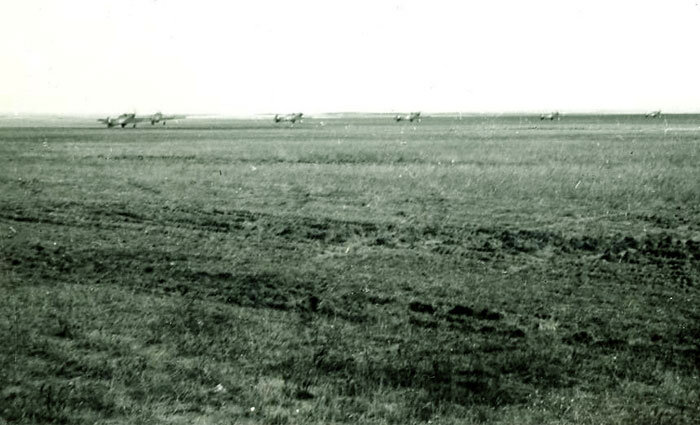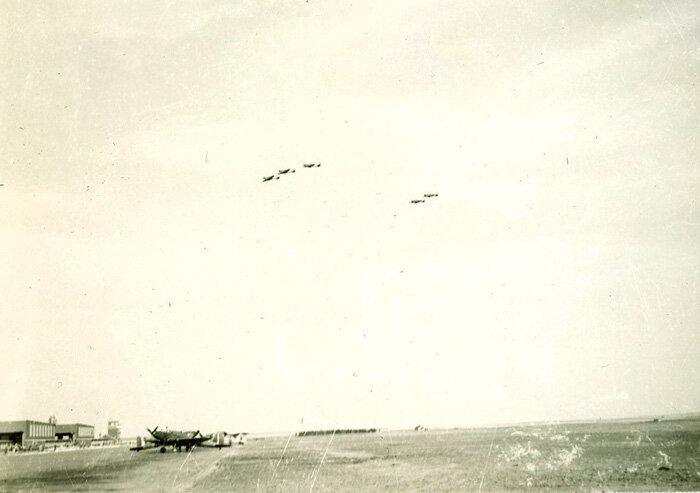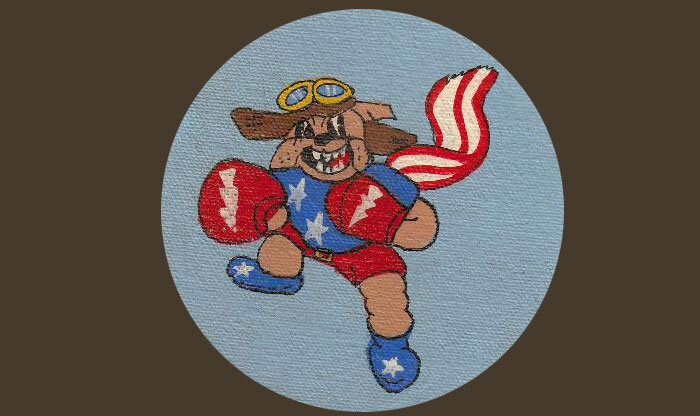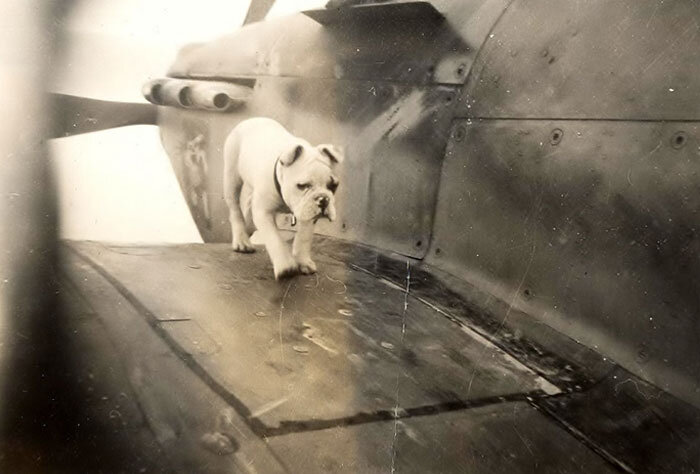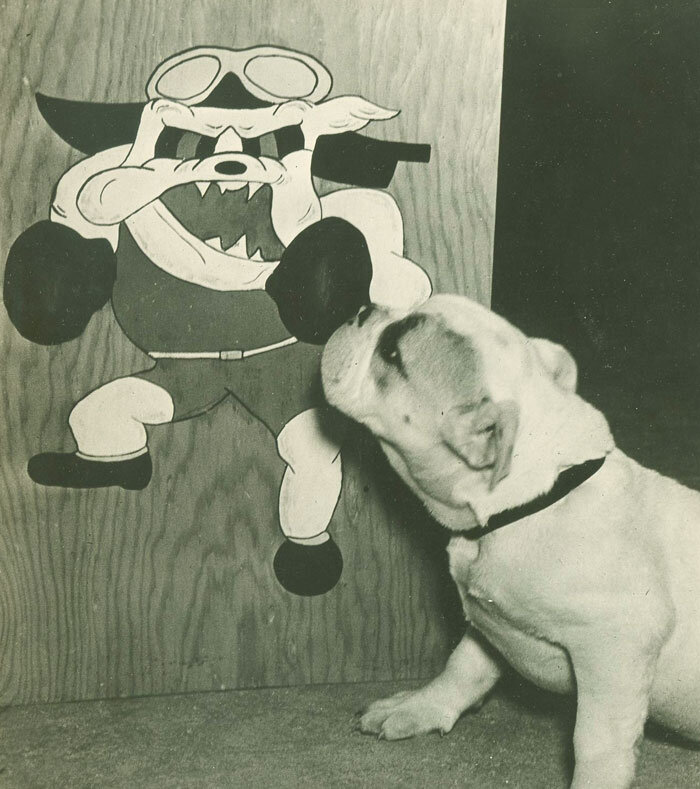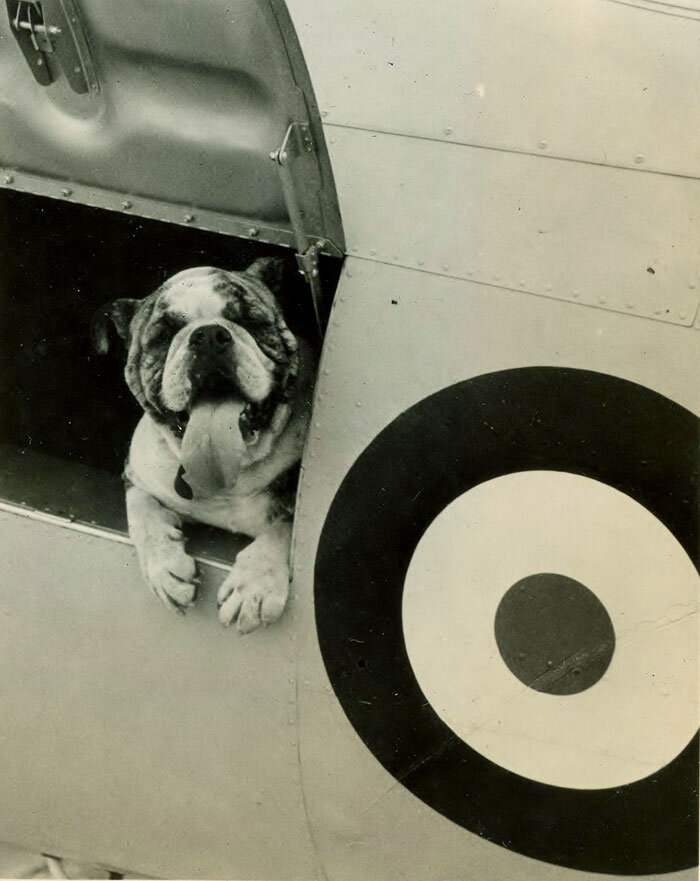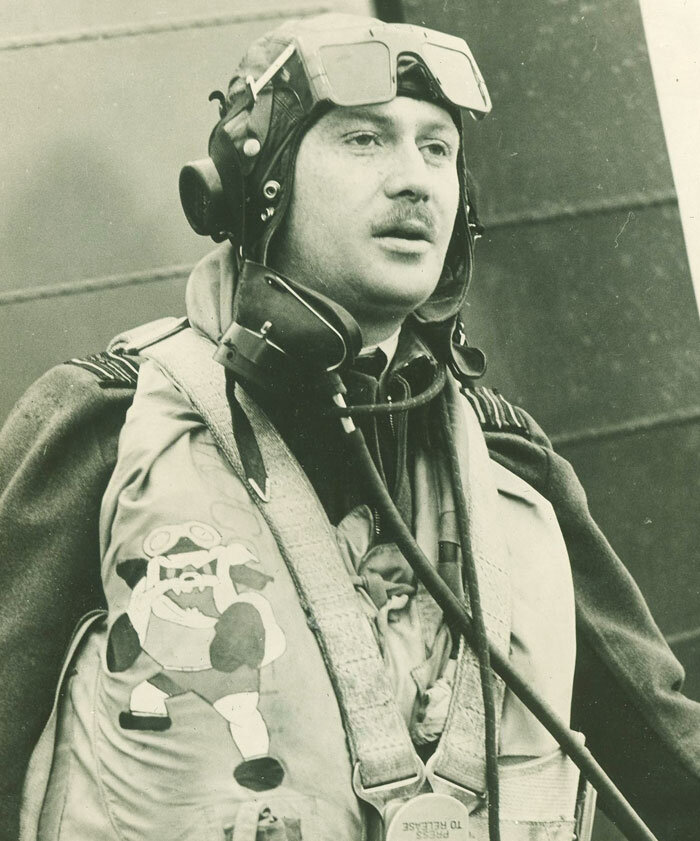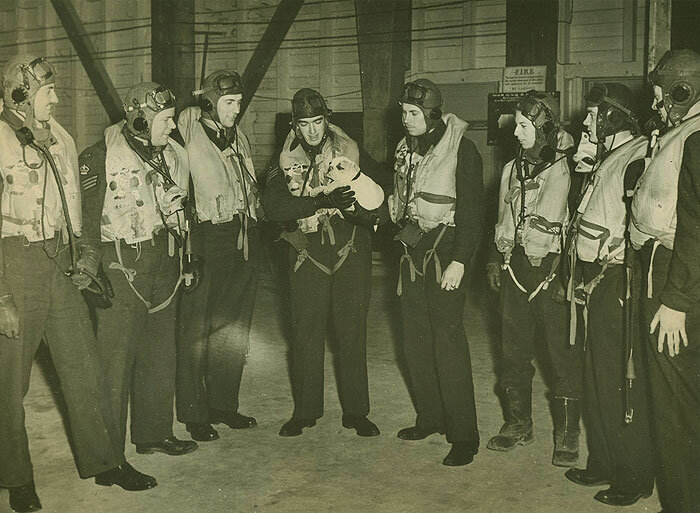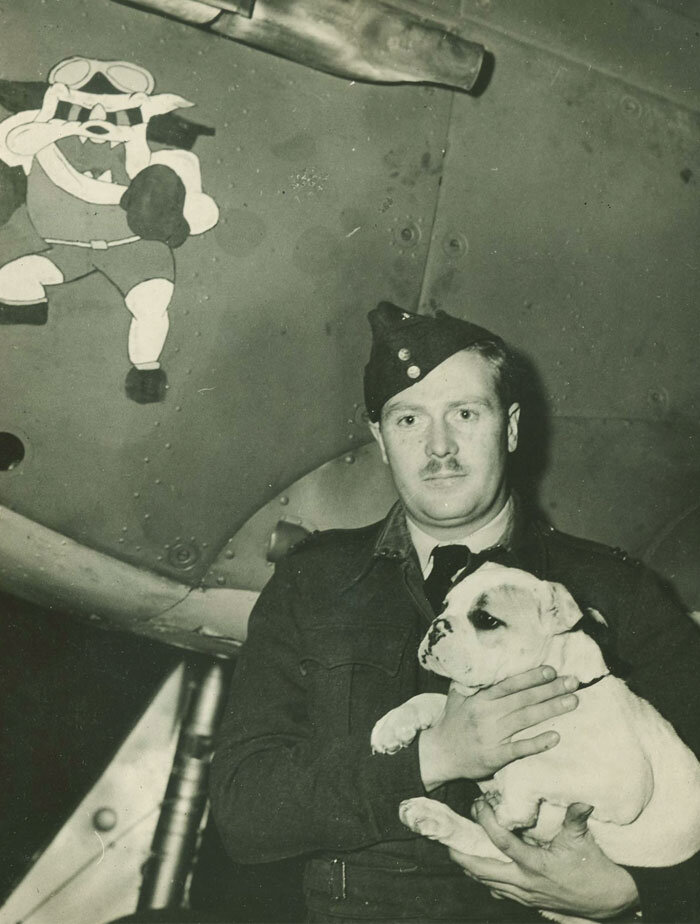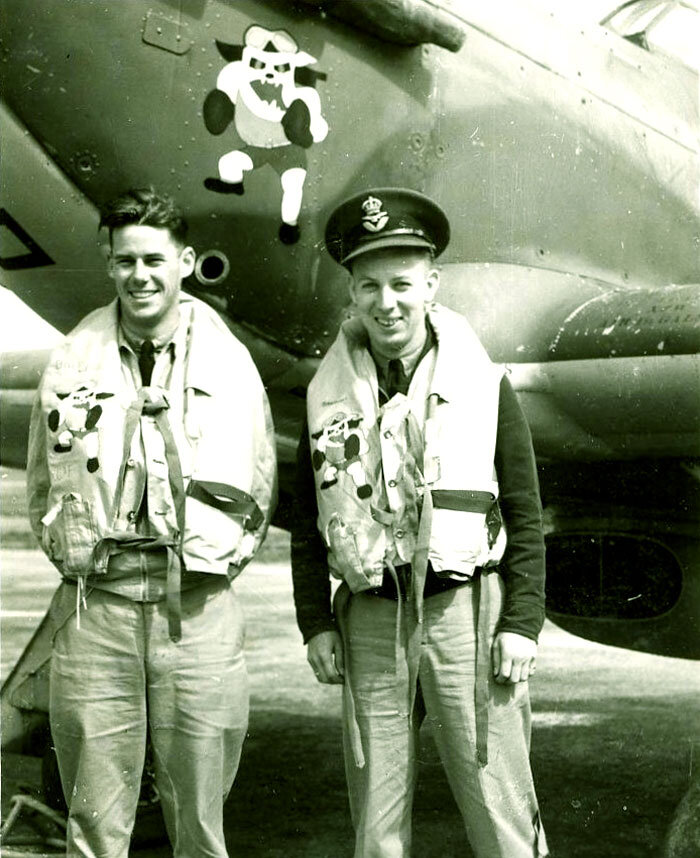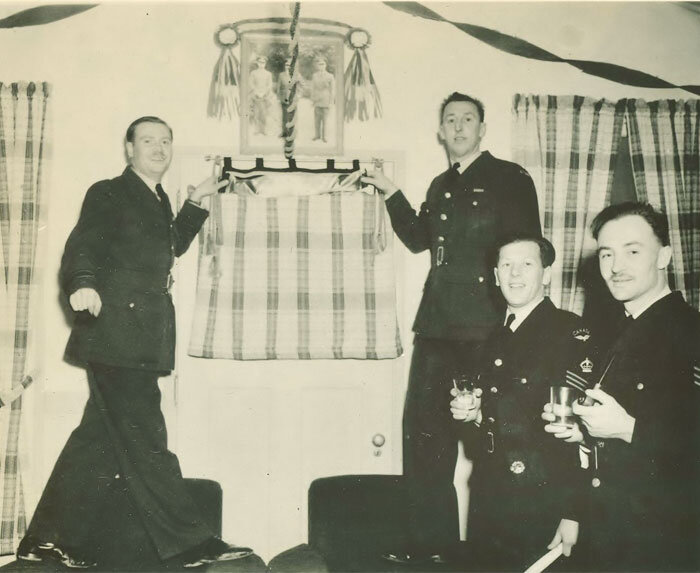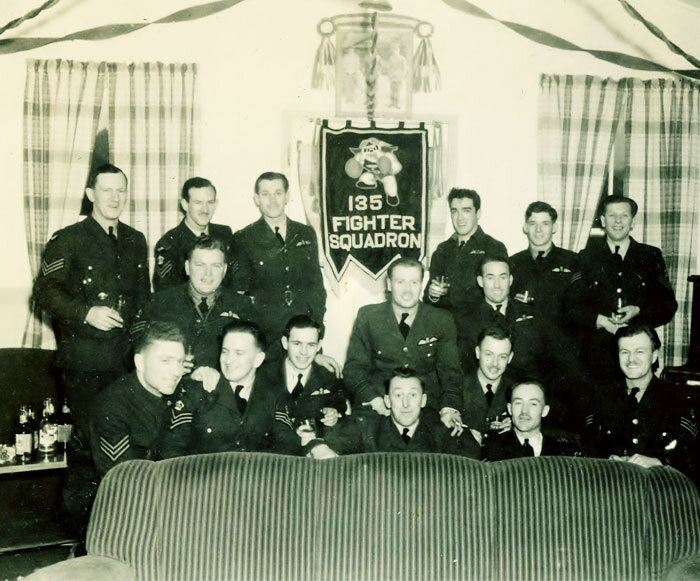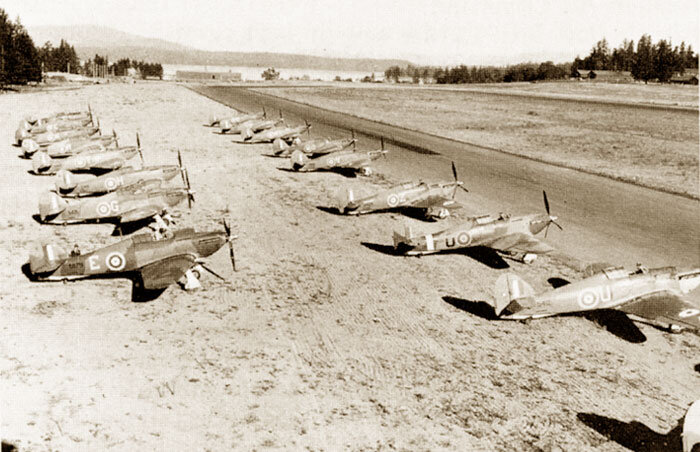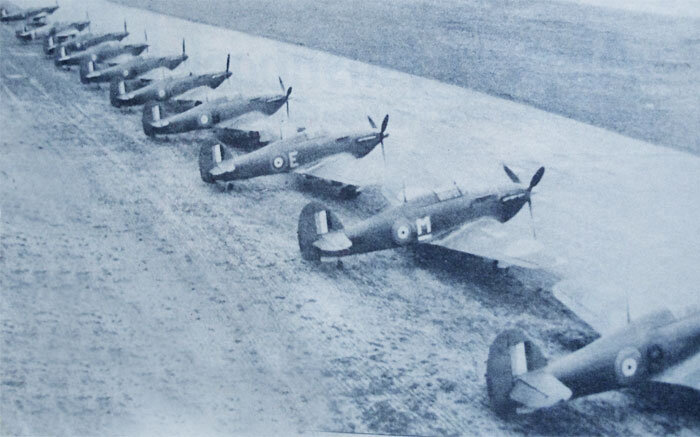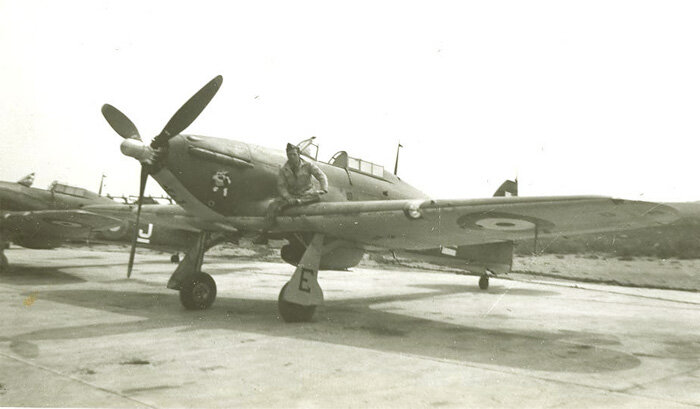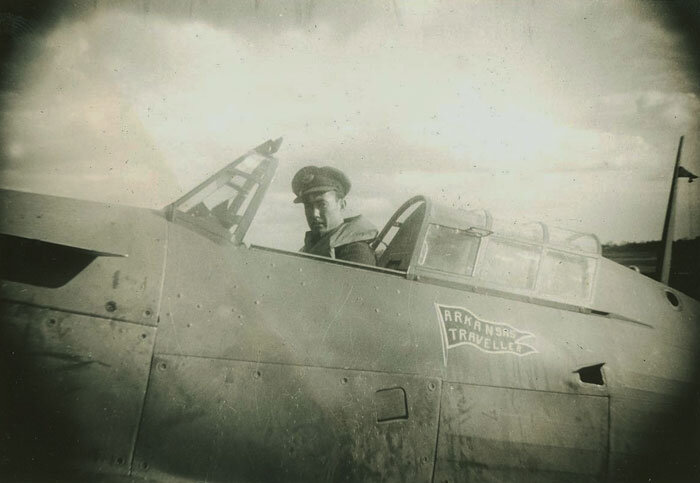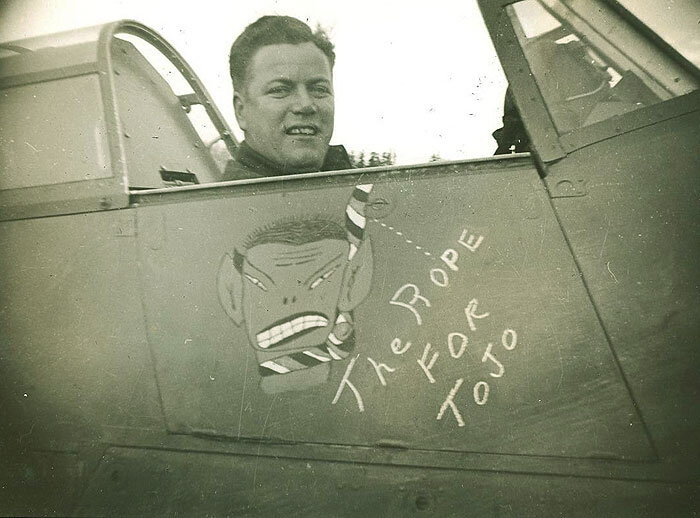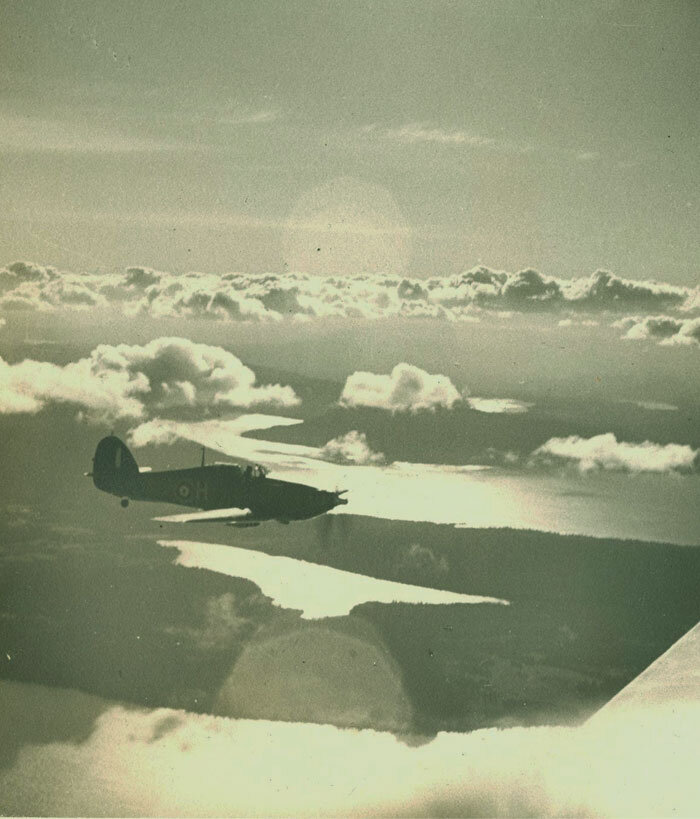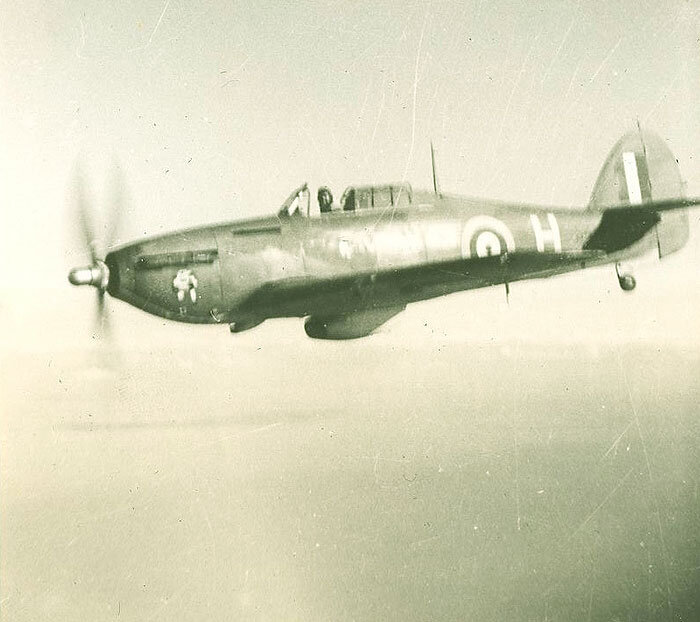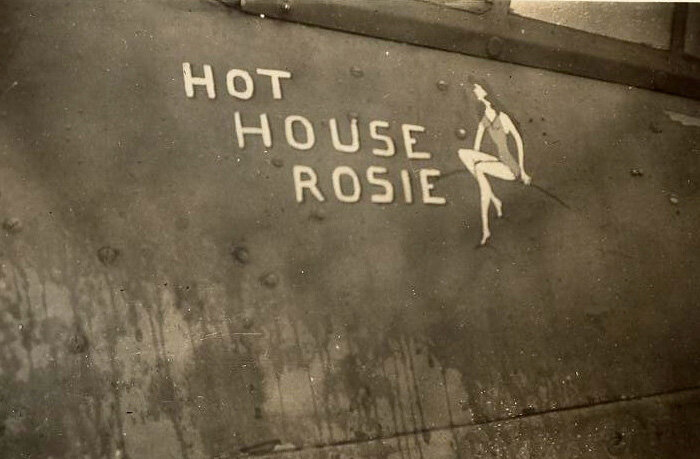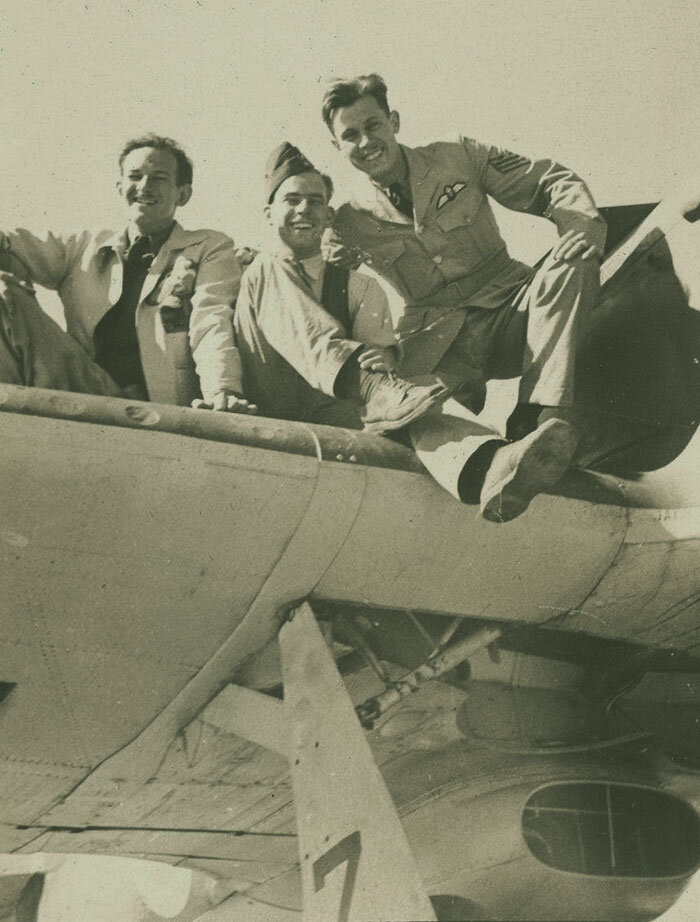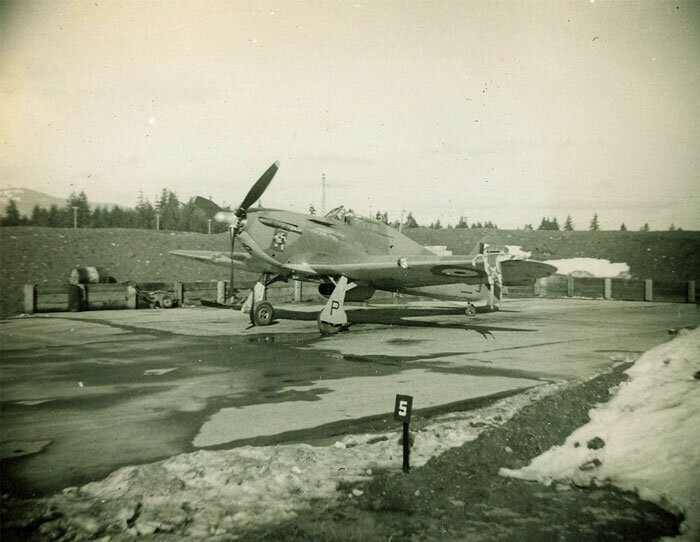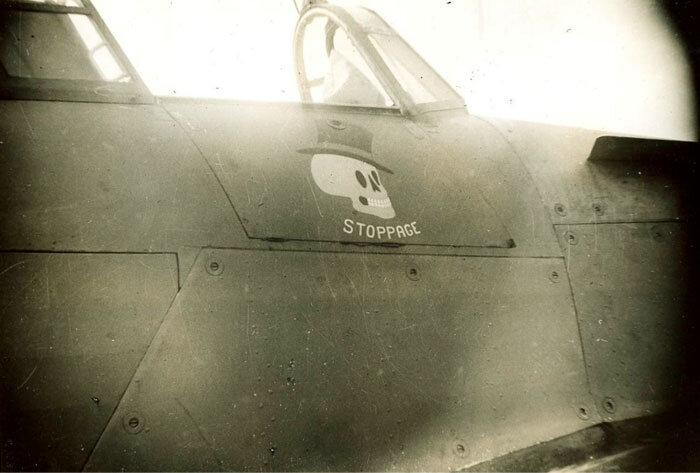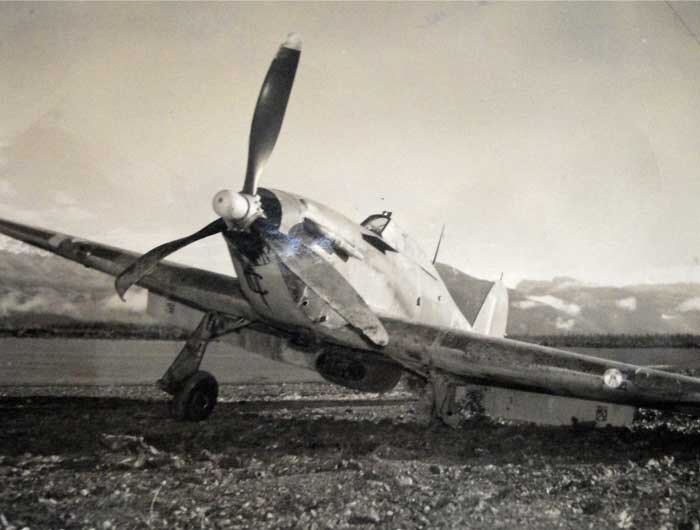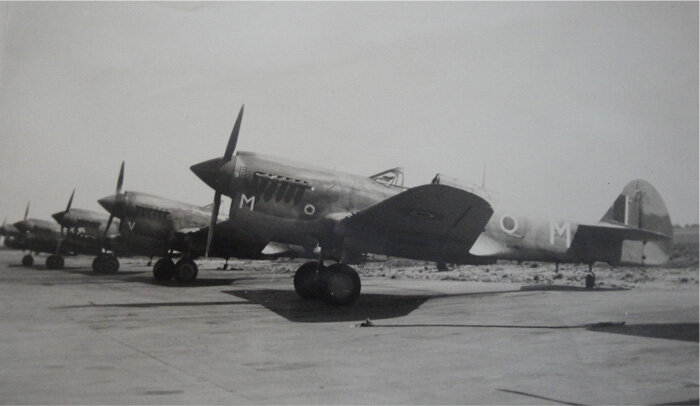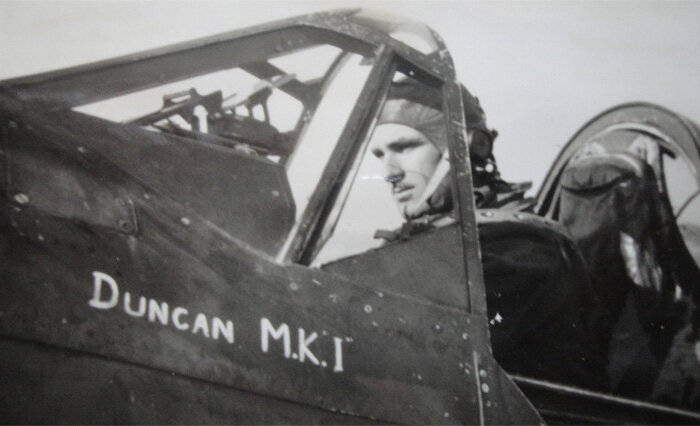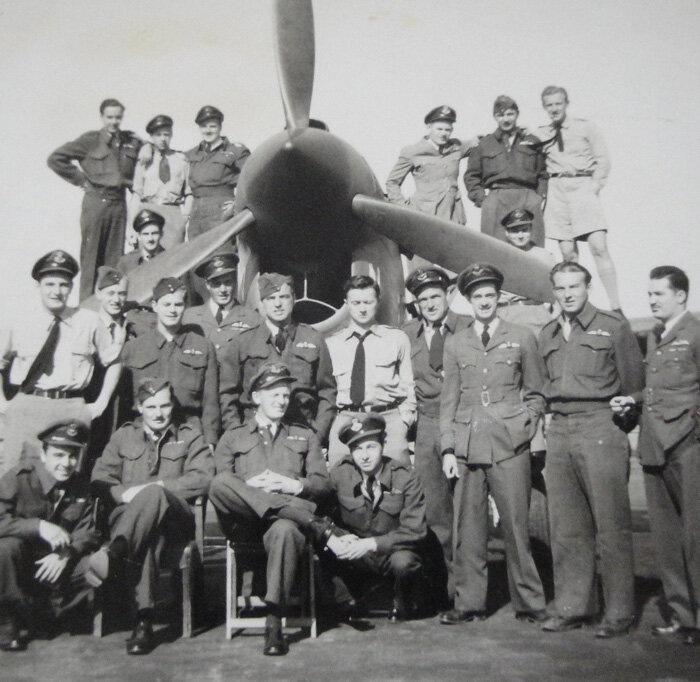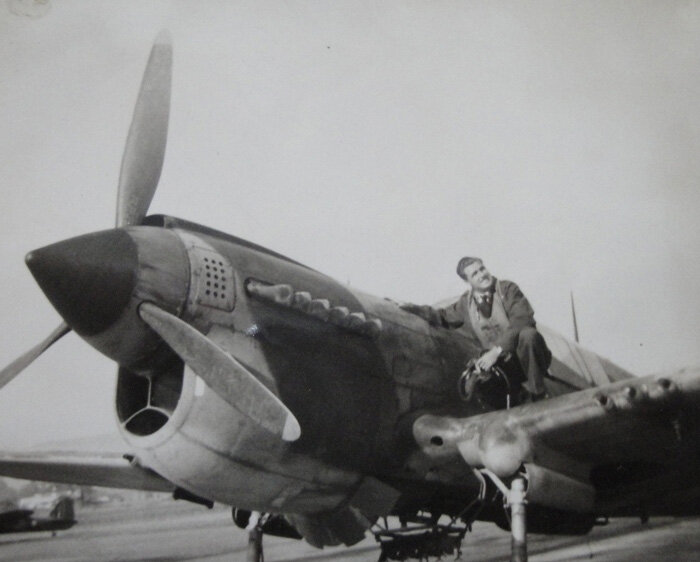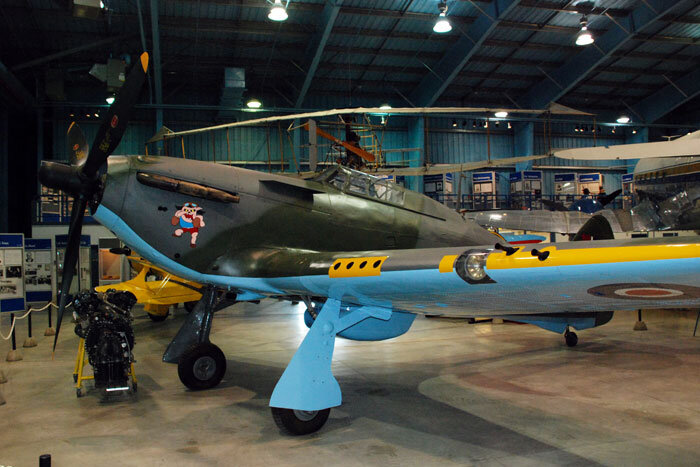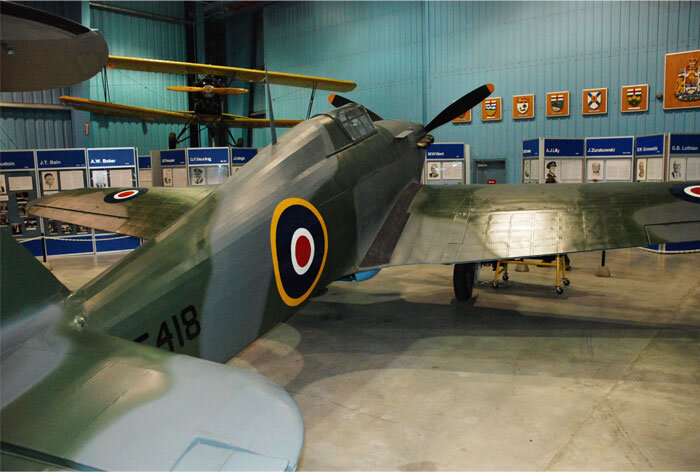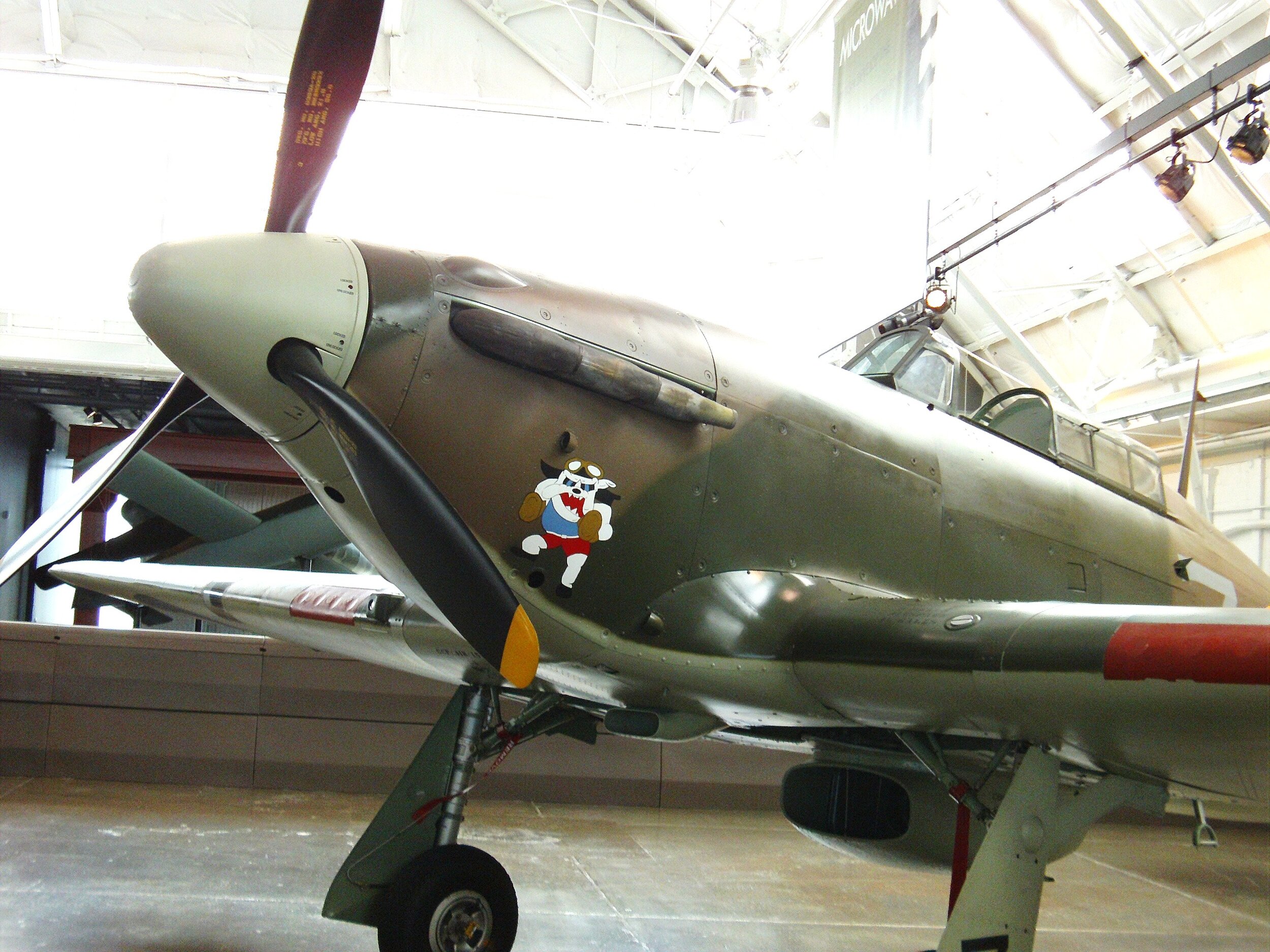BULLDOGS ON THE COAST
The author would like to thank Jerry Vernon, Mark Peapell and Mark Duncan for their assistance with this story
For most young testosterone-fuelled, newly-winged pilots of the Second World War, being a fighter pilot was the plum assignment, the glory job, the best of the best - a fighting man with the fastest and the most exciting aircraft of the day. Being chosen to become a Hawker Hurricane pilot of the Royal Canadian Air Force would surely induce the highest excitement levels and the “studliest” demeanour in a young flyboy. It was a golden opportunity for which there was no downside... unless, of course, you were selected to be a fighter pilot in a Canadian home defence squadron, stationed thousands of miles from the nearest real action. Even the ferry pilots got closer to the action than some of Canada's home defenders. But be as it may, those who found themselves defending the empty skies of Western Canada, did so with panache and professionalism.
Last summer, Vintage News contributor Mark Peapell sent me a collection of scans of vintage photos from a personal photo album belonging to George Lawson, a Canadian fighter pilot and one-time member of 135 Squadron, Royal Canadian Air Force. The album was gifted to the Atlantic Canada Aviation Museum and the photographs in Lawson's collection depicted early operations of 135 Squadron at Mossbank, Saskatchewan where they were formed up and later at RCAF Station Patricia Bay, British Columbia. Most of the images seem to surround the Squadron's successive bulldog mascots King and Queen and the unveiling and future displaying of their Walt Disney-inspired fighting bulldog emblem at Patricia Bay, Vancouver Island. I waited a few months to see if I could learn something more about 135. With the help of Jerry Vernon, one of Canada's foremost military aviation historians, we were able to tie the photographs from Lawson's album to the history of this short-lived squadron. In addition to VerNon's assistance, five months after receiving Lawson's images, I spoke with pilot Mark Duncan, the son of Dave Duncan, one of 135 Squadron pilots at Terrace and Patricia Bay, BC and was able to collect from him some wonderful images of both Hurricane operations and the final 135 P-40 Kittyhawk days at Patricia Bay. What follows is a brief history of the unit and images from the pErsonal albums of both Lawson and Duncan.
135 (F) Squadron was one of the many HWE (Home War Effort) defensive fighter and bomber squadrons stationed on both coasts. The manning practice for these squadrons was to have a mix of newly-trained pilots and pilots who were back home on a rest posting after completing an overseas tour. In many cases, new squadron pilots had no time on Hurricanes whatsoever and the squadron doubled as an OTU to get these men up to speed. The experienced pilots were supposed to teach the new guys operational tactics, flying and fighting skills and share their hard-won experience Later in the war, when the Hurricane OTU at Bagotville got going, the pilots came out of Bagotville and spent several more weeks at "finishing school", known as ATTD (Advanced Tactical Training Detachment). Part of ATTD was at Camp Borden, where the pilots would be trained on how to work with the Army, did sandbox exercises, etc., but no flying, and the other part was at Greenwood, NS, where the pilots seem to have mainly trained with rocket projectiles.
After a couple of weeks a Dakota came along and the two groups switched. As far as postings go, it appears that about half of the new Hurricane pilots went straight overseas and the rest went to the HWE squadrons on the East and West coasts. The OTU was for Hurricanes only and there never was anything set up to train the Kittyhawk pilots except for conversion on unit.
The photo album donated to the Atlantic Canada Aviation Museum came from George Lawson. Lawson, who trained at No. 7 EFTS and received his wings at No. 14 SFTS, Aylmer, Ontario, flew with 135 Sqaudron as a Hurricane pilot and with 402 on Spitfires on D-Day. Photo from G. Lawson Collection via flyingforyourlife.com
The 135 Squadron bulldog emblem, as seen in the opening colour photograph, was adapted by 135 Squadron pilot Alan Hartley from one created by Disney Studios for the 62nd Fighter squadron of the United States Army Air Force. In all, Disney designed more than 1,200 cartoon emblems for American and allied fighting units from air force squadrons, bombers to US Navy submarines and ships - part of that company's valuable contribution to the war effort. Two of Disney's most famous graphic contributions were the emblems of Clair Chenault's Flying Tigers and the RAF American-staffed Eagle Squadron.
With the help of Peapell, Vernon and Duncan, I was able to put together a fair outline of the activities of this truly all-Canadian unit - Canadian-built aircraft flown from Canadian air bases by Canadian pilots and serviced by Canadian ground crews.
A little background on 135 Squadron
135 Squadron was formed by the Royal Canadian Air Force before the 400 to 449 numbers were selected for the RCAF, and is often confused with 135 Squadron RAF. The unit was stood up at Mossbank, Saskatchewan as part of Number 4 Training Command on June 15th, 1942, six months after the Japanese attack on Pearl Harbor and was constituted to provide air defence of the West Coast of Canada against possible attack by the Japanese. The unit remained and trained at Mossbank for the next four months. Simultaneous to this, a sister unit, 133 Fighter Squadron, was formed at Lethbridge, Alberta. The RCAF's Secret Organization Order No. 70, dated June 2nd, 1942, states in part, "[135 Squadron] Will be attached to No. 2 Bombing and Gunnery School, to provide the remaining personnel necessary for the operation of this Squadron while located at Mossbank."
Most of the squadron's brand spanking new Hurricanes came directly from the Canadian Car and Foundry factory in Fort William at the western tip of Lake Superior and some were borrowed from their sister squadron at Lethbridge. The 135(F) Squadron diary shows the following arrivals:
15 June 42: Squadron formed today.
27 June 42: 4 Harvards arrived.
08 July 42: 3 Hurricanes arrived, on loan from Lethbridge (133 Sqn.) (5385, 5386, 5389)
11 July 42: First Hurricane flight.
?? July 42: RCAF 5396 also on loan from 133(F) Sqn.(not TOS until 15 Jul 42)
17 July 42: All pilots have soloed on the Hurricane.
?? July 42: 2 Hurricanes must have arrived 20 - 22 Jul(not in my notes)
23 July 42: 4 Hurricanes arrived from Fort William. Total now is 10.
24 July 42: 3 Hurricanes arrived from Fort William.
1 borrowed Hurricane returned to 133(F) Sqn.(5396)
25 July 42: 2 Hurricanes arrived from Fort William.
26 July 42: 2 borrowed Hurricanes returned to 133(F) Sqn.(5385, 5389)
30 July 42: 1 borrowed Hurricane returned to 133(F) Sqn.(5386)
03 August 42: 4 Hurricanes arrived from Fort William. Total now is 16.
05 August 42: 3 Hurricanes arrived from Fort William. Total now is 19.
07 August 42: 3 Hurricanes arrived from Fort William. Total now is 22.
10 August 42: 2 Hurricanes arrived from Fort William. Total now is 24.
On their way to Mossbank? This shot of Hurricane 5403 was taken at No. 8 Repair Depot, Winnipeg, and it came to Jerry Vernon via Norm Malayney in 2006. Vernon says, “I was unable to pin down when the photo was taken, but had some ideas at the time. The question is whether it was taken on or about 20 Jul 42, when 5403 plus several other Hurricanes were being ferried from Fort William to Mossbank or was it taken later, after 135(F) Sqn. had stood down at Terrace, BC in Feb 44? RCAF 5403 is "unaccounted for" between Feb 44 and Aug 44, when it went into Stored Reserve in Eastern Canada. It appears, from the card information, to have been overhauled... somewhere... just before it went into storage, as it shows as "0 hrs TSO". As this Hurricane seems exquisitely new with exhaust stacks looking unbeaten, no grease, oil or exhaust stains, and still shiny tires,one has to think it was the former scenario of a Hurricane being delivered to 135 Squadron right from the Fort William factory of Canadian Car and Foundry -Ed. Photo: Al Hanson via Norm Malayney and Jerry Vernon
Related Stories
Click on image
The first commanding officer of 135 squadron was S/L Ed Reyno, but for just over a month (15 Jun - 18 Jul 42). Reno then went to the newly-formed No. 1(F) Hurricane OTU at Bagotville, where he was Chief Instructor. In this photo, Squadron Leader W.C. Connell (seated centre), who took over from Reyno, proudly sits for the camera with the senior NCOs of the newly constituted 135 Squadron at RCAF Station Mossbank, Saskatchewan in the summer or early autumn of 1942. Reyno's whose post war career would see him as Vice Chief of the Defence Staff and Deputy Commander of NORAD. Ed Reyno was the uncle of Mike Reyno one of Canada's top aviation photographers and publisher of Canadian Skies, Canada's premier aviation magazine. Reyno would go from here to be the Chief Instructor at the Hurricane OTU at Bagotville as the war progressed. Photo from G. Lawson Collection
While searching the web for information on Reyno and Connell, I came across this photo which shows both future leaders of 135 Squadron together in England. Both were from No. 1 Squadron RCAF, (eventually 401), and flew during the Battle of Britain. This image shows them "discussing” tactics in October of 1941, with then Flying Officer Connell (who would also fly Hurricanes with 32 Squadron RAF) on the left and Flight Lieutenant Ed “Pappy” Reyno on the right. In the centre was Flying Officer Ken Boomer of Ottawa, who would not survive the war. Clearly, 135 Squadron began its short career led by experienced, competent and battle ready flight leaders and not simply rank climbers. Both Connell's and Reyno's names are inscribed on the Battle of Britain monument on the Thames Embankment in London. RAF Photo
Newly arrived and marked Hawker Hurricane Mk XIIs warm in the sun at Mossbank, Saskatchewan in 1942. The Hurricane (RCAF serial 5405) in the foreground is the same as the one shown in the colour photo in the opening title image of this story. Delivered to No. 4 Training Command for No. 135 (F) Squadron at Mossbank, Saskatchewan on 20 July 1942, 5405 remained with this unit when it transferred to Western Air Command. Hurricane 5405 was involved in a Category C crash at Patricia Bay on February 2nd, 1943, with its pilot, Sergeant M. J. Binion, being uninjured. While practicing circuits and landings on his second solo on type, the pilot levelled off slightly high and swung off the runway, the aircraft turning on its nose. 5405 was then repaired and returned to the unit, but was involved in a mid-air with Hurricane 5408 on May 8th, 1943, while practicing section attacks on three other Hurricanes, five miles East of Ladysmith. Luckily, both pilots were uninjured. About 2 feet of starboard wing tip of 5408 was chewed off by the prop of 5405. The prop was bent forward slightly and the underside of the port wing was scraped and dented inward. The pilot was FSgt K. C. Gallinger. The aircraft was sent to stored reserve with No. 3 Training Command on August 7th, 1944 and made available for disposal from September 17, 1945, with No. 1 Air Command. It had 467:15 hours on the airframe time when struck off the RCAF lists at Dunnville, Ontario.
Immediately behind Hurricane 5405 sits Hurricane 5418. This Hurricane was involved in a fatal mid-air with Hurricane 5419 on May 30th, 1943, during a formation low flying exercise four miles North of Sydney Island, BC. 5419 was No. 2 in formation, flown by F/O Richard Haviland Pallen. The propeller of the No. 3 aircraft, RCAF 5418, flown by FSgt T. E. Jackson, cut off the tailplane of 5419, causing it to dive straight into the water. The propeller on 5418 was severely damaged, but the pilot managed to return to base safely and was uninjured. The body of F/O Pallen was recovered in the wreckage of his aircraft on June 6th, 1943. Instead of going into storage after deployment to Terrace, BC it became one of the 12 "Prairie Hurricanes" that were dispatched to the BCATP stations on the Prairies to combat the Japanese fire balloons that were being sent up to drift across North America. Most of these aircraft survived and are now in museums and collections in Canada, the US and the UK, having been sold out of Swift Current to Prairie farmers and later being rescued by Harry Whereatt and others. Despite its near destruction in the accident, 5418, survived the war and now is beautifully restored at the Reynolds-Alberta Museum at Wetaskiwin, Alberta – home of Canada's Aviation Hall of Fame. See below for images.
In the far background we can see one Hurricane with nose pointed left that bears the new Bull Dog emblem. This clearly indicates that the emblem was designed, unveiled and applied while aircraft were still at Mossbank. Photo from G. Lawson Collection via Atlantic Aviation Museum
Another photo taken at Mossbank shows most of the squadron's Hurricanes (5403 in the foreground), many with newly applied bulldog nose art. The logo was adopted prior to their departure for Patricia Bay. Photo via Mark Peapell, Atlantic Canada Aviation Museum
A photo of Hurricane “T”. Given the low and broad horizon, this is possibly at Mossbank. Photo from G. Lawson Collection via Atlantic Aviation Museum
135 Squadron Hurricanes taxi out for take-off at Mossbank, in 1942. This is possibly the day they departed en mass for Patricia Bay. Photo from G. Lawson Collection via Atlantic Aviation Museum, via Mark Peapell
Formation training at Mossbank, 1942. Photo from G. Lawson Collection via Atlantic Aviation Museum
Though their first home was on the prairie, the unit was destined to relocate to a new facility at RCAF Station Patricia Bay, near Victoria, BC at the southern tip of Vancouver Island. The RCAF's Secret Movement Order No. 2, dated 10 Sep 42, covers the relocation to Pat Bay, and states in part, "The relocation of No. 135 Squadron at Patricia Bay, B.C. is to be considered an expedient only, for an unspecified period, pending the availability of accommodation at No. 135 Squadron's ultimate war station." Though both units were to be Pat Bay squadrons, the fact that facilities there had not been finished meant that they formed up and began training out on the Prairies.
Ed Reyno oversaw the stand-up and the recruitment and assembly of the squadron pilots, but he was not there very long. He was followed shortly by Squadron Leader W.C. Connell, who would take them through their training and lead them to Pat Bay. We are not sure which commander, Reyno or Connell, who oversaw or directed the creation of the Squadron symbol and mascot - the Bulldog. Having just returned from fighting as part of the famous “Few” in the Battle of Britain, it now seems obvious and logical that the man who did should choose, as a symbol, the oft-used image of Winston Churchill as a bulldog to become his first squadron's mascot and symbol. For a squadron tasked with the defence of a nation, as was Connell and Reyno's 1 Squadron during the Battle of Britain, the Bulldog was a perfect choice for a symbol... tenacious, dogged, and sturdy as a Hurricane.
The 62nd Fighter Squadron, USAAF emblem, shown here hand painted on a patch and designed by Disney Studios was adapted for 135 Squadron.
The pugilistic pup and King and Queen
As a young puppy, King walks the wing of a 135 Squadron Hurricane at Mossbank. Note the bulldog logo on the nose of the aircraft. Photo from G. Lawson Collection via Atlantic Aviation Museum
King, one of 135 Squadron's two live British bulldog mascots for 135 Squadron, sniffs out the competition, a colourful recreation of the Bull Dog emblem in plywood. Jerry Vernon quotes the squadron diary which, on August 5th, 1942 read, “The Squadron Mascot, a British bull pup, as purchased today in Regina, Saskatchewan, to be known as Cpl. Picadilly Regina, Regimental No. 166762, nicknamed 'King'. King reported by air from Regina, Sask. at 1200 hrs today, and he is entitled to Rations and Quarters, effective the same date." This was two months before they moved to Patricia bay. Photo from G. Lawson Collection via Atlantic Aviation Museum
An older-looking King sits in the luggage bay of a squadron Harvard at Mossbank. According to documents about aircraft movements, 135 Squadron had two to four North American Harvards at their disposal - no doubt for liaison and other administrative flights. Unfortunately, in October 6th, 1942, the Squadron Diary states that “Our Squadron Mascot(bulldog), Sgt. King, No. 166762, died today in Victoria, B. C., because of an abscessed kidney”. Photo from G. Lawson Collection via Atlantic Aviation Museum
The 135 Squadron Commanding Officer Squadron Leader W. C. Connell shows off his Mae West with the unit's new Fighting Bull Dog emblem painted on it. A rare tradition, the emblem was worn on the Mae Wests of all 135 Squadron pilots. Connell was the CO of 135(F) Sqn. from July 19th, 1942 until October 30th, 1943, so he was the CO from the time they were still in Mossbank until after they had moved to Annette Island, Alaska. Later, he became the CO of 133(F) Squadron, RCAF, when 133 was at Tofino and Sea Island. Photo from G. Lawson Collection via Atlantic Aviation Museum
Squadron pilots stand easy in a Patricia Bay hangar, admiring their newly acquired mascot Queen, another British bull dog acquired, no doubt, to replace the recently deceased King. The photo is captioned "Queen's Arrival”. Each pilot in the squadron sports a Mae West life vest painted with the new “pugilistic pup” emblem. Photo from G. Lawson Collection via Atlantic Aviation Museum
Squadron Leader Connell poses with the other unit mascot, Queen, by the nose of a unit Hurricane probably at Patricia Bay. Photo from G. Lawson Collection via Atlantic Aviation Museum
Two 135 Squadron pilots, Sergeant Carranger and Flying Officer Wiley (r) model new (hardly covered in oil at all) Mae Wests with the squadron emblem painted colourfully on each. Clearly, some talented maintainer had a lot of work painting the mascot on each pilot’s vest and on the sides of all the Hurricanes on squadron. Photo from G. Lawson Collection via Atlantic Aviation Museum
On September 30, 1942, 19 Hawker Hurricanes and 2 Harvards of the 135 Squadron Bulldogs flew from Mossbank, Saskatchewan to Lethbridge, Alberta, where they stayed overnight with sister unit 133 Squadron. The planned overnight turned into a two day stay due to weather, but on October 2nd, 1942, they ferried their fighters through Spokane, Washington and over to Yakima, en-route to Pat Bay. They arrived at Yakima on the 3rd, but bad weather forced them to sit where they were for two more of days. After a long journey, they arrived in Pat Bay from Yakima on the 5th. Also on October 5th, 1942, 133 Squadron ferried their Hurricanes from Lethbridge to the nearly-completed Boundary Bay station, via the same Spokane to Yakima route. There was an accident and several near misses as the unit arrived and hastily landed at Boundary Bay, with a fog bank moving in down the runway. They were all trying to stop before they ran into the fog bank, without running into each other or going up on their nose, as one did. The main party (ground personnel and other equipment) of the squadron had arrived in Patricia Bay by train and ferry on 04 Oct 42, a day earlier than the aircraft. Two days later, King, the squadron mascot would die.
Squadron Leader W.C. Connell, commanding officer, (Left) stands on a mess chair ready to lower a plaid curtain to reveal to staff photographers, the new 135 Squadron fighting bull dog emblem at their new home in Patricia Bay, Vancouver Island in 1942. This event was more likely the opening of their new mess than the unveiling of their new squadron emblem. Photo from G. Lawson Collection via Atlantic Aviation Museum
Squadron Leader Connell (beneath banner) and his mostly Sergeant pilots pose proudly with their Fightin' Bulldog squadron emblem. We are not sure who everyone else is in this photo, but Mark Peapell writes that squadron pilots at this time were listed as Al Harley (the man who adapted the American logo), Jack Roberts, Alexander Wheeler, Mark Beazer, Ross Clarke, ” Pop” Battleson (left, second row), D. Passmore, E. Walcroft, G. Lawson, Tom Adams, Pallen, Jackson, Hopkins, Frey, Carragher, Boileau, Hattie, Wiley, McGill, Cornell, Aucoin, Gallinger, Stewart, and Foster. Photo from G. Lawson Collection via Atlantic Aviation Museum
The squadron would remain for almost a year at Patricia Bay. In August of 1943, the squadron moved their Hurricanes and people to Annette Island, Alaska, remaining there until November. Western Air Command Operation Order No. 12WAC/43, dated November 4th, 1943, initiated the relocation of No. 135(F) and No. 149(Bomber) Squadrons from Annette Island, Alaska, to the newly-built RCAF Station Terrace, in the interior of the province, which was intended at that time to be their "permanent location".
A photograph of 135 Squadron Hurricanes at RCAF Station Patricia Bay near Victoria, BC around ther time they left for Annette Island. Photo via Jerry Vernon
On March 2nd, 1944, Operation Order No. 18 commanded that:
"No. 135(F) Sqn. is to be moved from Terrace to Patricia Bay. Squadron aircraft are to be made fully serviceable and prepared for long term storage at Terrace. The Squadron will be re-equipped with aircraft at Sea Island. The Officer Commanding shall detail 18 pilots to ferry 18 Hurricane aircraft from Sea Island to Patricia Bay on 12 Mar 44 or as soon thereafter as weather may permit."
A 135 Squadron Hurricane over Annette Island in the Alaskan Panhandle during their deployment there in from August 6th, 1943 – November 16th 1943.
So, the squadron went around in a circle... from Pat Bay to Annette Island to Terrace and finally back to Pat Bay! The practice at the time was not to keep a squadron at an "isolated station" (ie: Tofino, Annette, Terrace) for more than a few months at a time, so every several months there was a big musical chairs exercise involving several squadrons. Sometimes they brought their aircraft with them and other times they moved to their new station, perhaps leaving their Hurricanes behind for another squadron and converting to Kittyhawks at the new station.
In this case, the 135(F) Sqn. Hurricanes were left stored at Terrace, and later were shipped by rail to Eastern Canada for overhaul, or perhaps simply put into storage there. The pilots came down to Vancouver on leave and then picked up different Hurricanes at Sea Island and ferried them to Pat Bay. However, they found themselves short-changed by a couple of Hurricanes at Sea Island, so several pilots had to go back to Terrace and pick up 3 Hurricanes.
In May 1944, 135 re-equipped with the Kittyhawk Mk. IV, which it flew until the end of the war. They were the last squadron to fly the Hurricane on the West Coast during the war, all others having re-equipped with the Kittyhawk prior to May 19, 1944
Another photo from a local paper shows 135s arrival at Patricia Bay from Terrace, British Columbia via Sea Island, shows the flight line crowded with different Hurricanes which they picked up in Sea Island, lined wing tip to wing tip. The image was probably taken by a news reporter standing on the control tower balcony or perhaps a hangar roof. Photo via Dave Duncan Collection
Another photo of a 135 Squadron Hurricane with ground crewman sitting on wing. Photo from G. Lawson Collection via Atlantic Aviation Museum
135 Squadron pilot Tom Adams with his Hurricane, the “Arkansas Traveller”. Photo from G. Lawson Collection via Atlantic Aviation Museum
There was no holding back when it came to racist images of the Japanese, even for Canadian fighter pilots. Here a 135 Squadron Hurricane, flown by “Pop” Battleson sports artwork depicting a Red, White and Blue rope hanging a highly egregious image of General Hideki Tojo, Japan's War Minister, replete with slanted eyes, pointed ears and buck teeth. Judging by the pine trees in the background, and the graphic clear reference to fighting the Japanese, this image most likely was taken on the West Coast - Pat Bay, Terrace or Annette Island. Photo from G. Lawson Collection via Atlantic Aviation Museum
A beautiful if somewhat damaged image of a 135 Squadron Hurricane (H) flying off the coast of British Columbia. Photo from G. Lawson Collection via Atlantic Aviation Museum
As this is also Hurricane “H”, this photo was quite possibly from the same day as the proceeding image. We can clearly see the recognizable Strait of Georgia behind and below with the vague hint of snow capped mountains in the distance. Photo from G. Lawson Collection via Atlantic Aviation Museum
Hot House Rosie - another personal piece of artwork adorning a 135 Squadron Hurricane. Photo from G. Lawson Collection via Atlantic Aviation Museum
The weather in Victoria in the summer and indeed all year round made tropical tan uniform derigeur. Photo from G. Lawson Collection via Atlantic Aviation Museum
A 135 Squadron Hurricane sits on a ready dispersal pad at Patricia Bay, sporting a bulldog emblem on a rectangular field. The pilot's Mae West hangs on the port wing tip, ready for the scramble in case of attacking Japaneseaircraft. Photo from G. Lawson Collection via Atlantic Aviation Museum
George Lawson's personal Hurricane sported additional artwork beneath the starboard cockpit rail - a top-hatted skull with the odd caption – “STOPPAGE’
The Dave Duncan Collection
Pilot Mark Duncan submitted some images scanned from his father's album showing both Hurricane and Kittyhawk operations while he was with the squadron from 1944 to the end of the war. Duncan started his war on the East Coast flying as a crew mechanic on Stranraer Flying Boats prior to remustering as a pilot. Duncan was also the brother-in-law of one of Canada's most famous fighter aces Squadron Leader Vernon Crompton“Woody” Woodward, DFC and Bar. Mark remembers the good-natured competition always existing between his dad and “Uncle Vern”.
The images from Duncan's album show us the transition from Hurricane to Kittyhawk. Of the two, Duncan preferred the P-40, though, as he says, the Kittyhawk was somewhat unstable in a dive
A beautifully sunny day at Terrace after a light snow gives us this lovely shot of a 135 Squadron Hurricane on the ramp. Photo from Dave Duncan Collection
Despite the lack of an enemy to tangle with, danger was part of the job. According to Mark Duncan, his father Dave had a “small prang” in Terrace in 1943. This photo was in Duncan's personal album and may indeed be of the incident he was involved with - in Hurricane 5406. Photo: Dave Duncan Collection
Cold weather operations at Terrace and Smithers, BC. Photo from Dave Duncan Collection
135 Squadron returned from Terrace, BC by way of Sea Island, Vancouver, where they picked up a different group of Hurricanes and took them back across Georgia Strait to Patricia Bay with them. Two months, later the squadron re-equipped with theKittyhawk IV. Here we see 135 Squadron Kittyhawks at Patricia Bay. Photo: Dave Duncan Collection
Erroll Flynn/Don Ameche-like pilot Dave Duncan at the controls of his “personal” Kittyhawk IV Duncan M.K.I at Patricia Bay. Photo from Dave Duncan Collection
The pilots of 135 Squadron stand before a Kittyhawk sometime between May 1944 and the end of the war.
Dave Duncan in his Kittyhawk, Patricia Bay, British Columbia. Photo from Dave Duncan Collection
Dave Duncan with his “favourite” Kittyhawk at Patricia Bay. This image was certainly taken at the same time as the previous shot. Photo from Dave Duncan Collection
Bulldogs today
Hurricane Mk XII (5418) at Reynolds-Alberta Museum at Wetaskiwin, Alberta, home of Canada’s Aviation Hall of Fame
